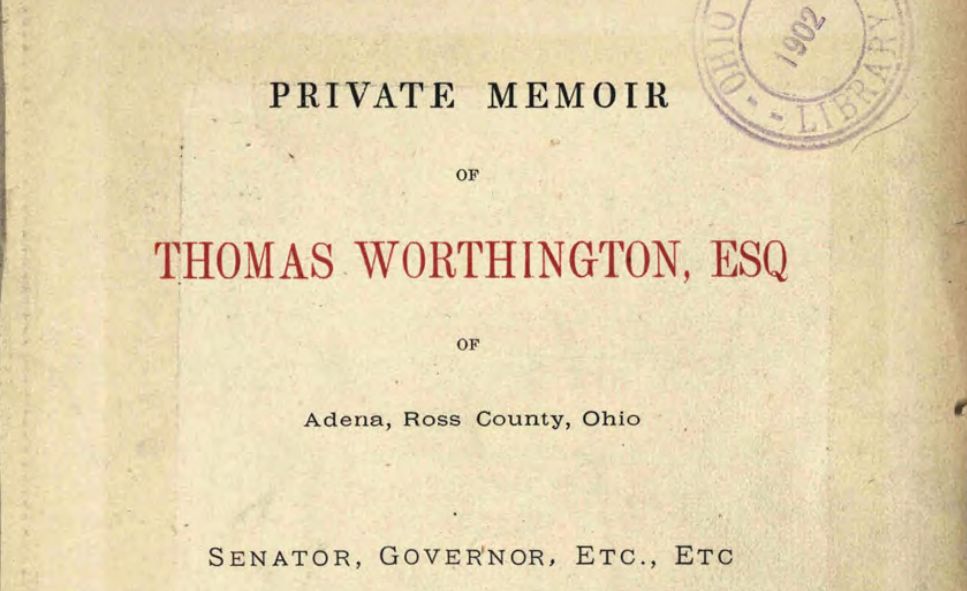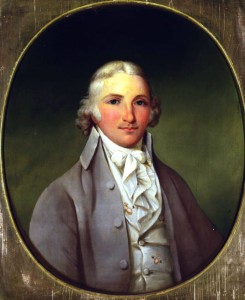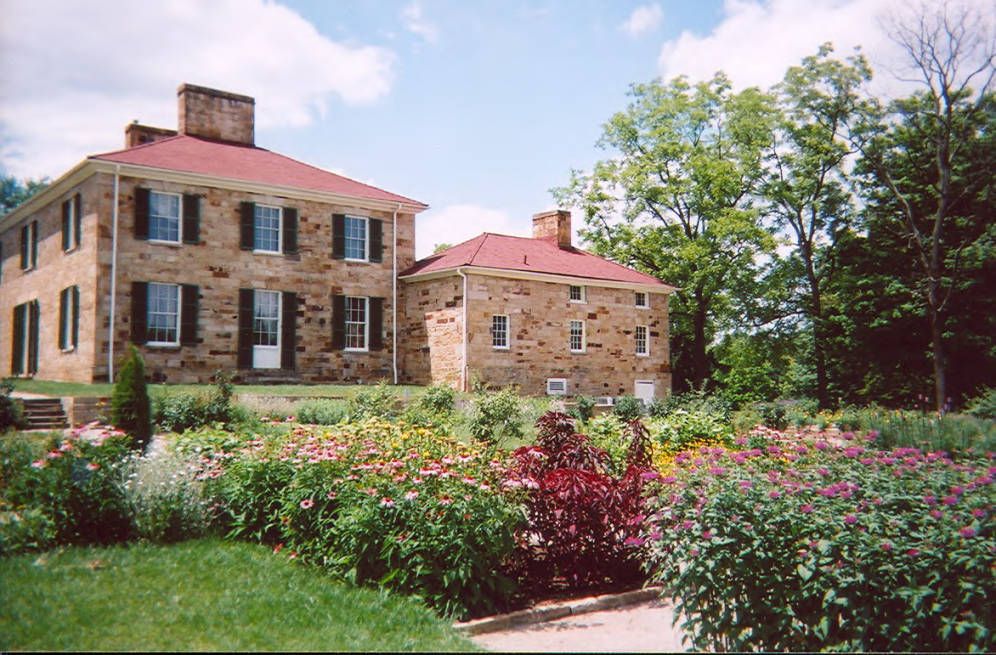Thomas Worthington: Dignus virtute avorum

On June 12, 1787, the delegates of the Constitutional Convention agreed that “No person shall be a Senator who shall not have attained to the age of thirty years, and been nine years a citizen of the United States and who shall not, when elected, be an inhabitant of that state for which he shall be chosen.” As it turns out, one of our first U.S. Senators from Ohio was just thirty years old when he took office: Thomas Worthington.

Worthington was born to Robert and Margaret (Edwards) Worthington in Charles Town, Virginia (now West Virginia), on July 16, 1773. His ties with Ohio were strong: his sister, Mary, was the wife of Edward Tiffin, first Governor of Ohio, and he inherited land belonging to General William Darke (for whom Darke County was named) after the death of the general’s son. As a consequence, he soon found himself residing in Chillicothe, Ohio. In fact, Worthington was a major force in the decision to make Chillicothe Ohio’s first capital, as well as playing a large role in Ohio’s admission into the United States in 1803.
Shortly thereafter, Worthington was elected to the United States Senate. He was four months shy of turning thirty at the time, making him (to this day!) one of the youngest people to ever serve as Senator in the U.S. He remained in office until 1807 and returned to serve again from 1810 to 1814, replacing Return J. Meigs after his election to the office of Governor of Ohio. Four years later he followed in Meigs’ footsteps, tendering his resignation from the Senate and becoming Ohio’s sixth governor. In fact, Worthington was in office when the State Library of Ohio was established and made the purchase of the library’s original collection possible.

In 1806, construction began on Worthington’s Chillicothe mansion, Adena. Named after the Adena culture – an Adena mound was located on Worthington’s property – the mansion was designed by British architect Benjamin Latrobe. The home still stands on 300 acres, as do five outbuildings and formal gardens, and this Ohio History Connection site is open for tours April through October.
In autumn of 1823, illness broke out throughout the Scioto Valley, and all residents of Worthington’s household became ill; incidentally, at this same time Ohio experienced an outbreak of malaria that sickened 165,000 people in Columbus alone. Worthington recovered – as did the rest of his household – but never fully recovered from his illness and he died four years later, just before his 54th birthday.
After his death, his daughter Sarah’s “anxious desire to transmit to his posterity some knowledge of his virtues” led her to writeA Private Memoir of Thomas Worthington, Esq. of Adena, Ross County, Ohio. The book was not intended for publication but, after her death, the desire of Worthington’s grandchildren to obtain copies of the book led to a limited printing of just thirty copies. One of those copies, belonging to Rufus King and his wife, Margaret Rives King, is now owned by the State Library of Ohio, and we are pleased to share it with you via Ohio Memory.
Thank you to Shannon Kupfer, Digital/Tangible Media Cataloger at theState Library of Ohio, for this week’s post!



Leave a Reply
You must be logged in to post a comment.